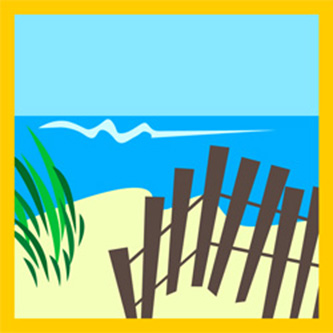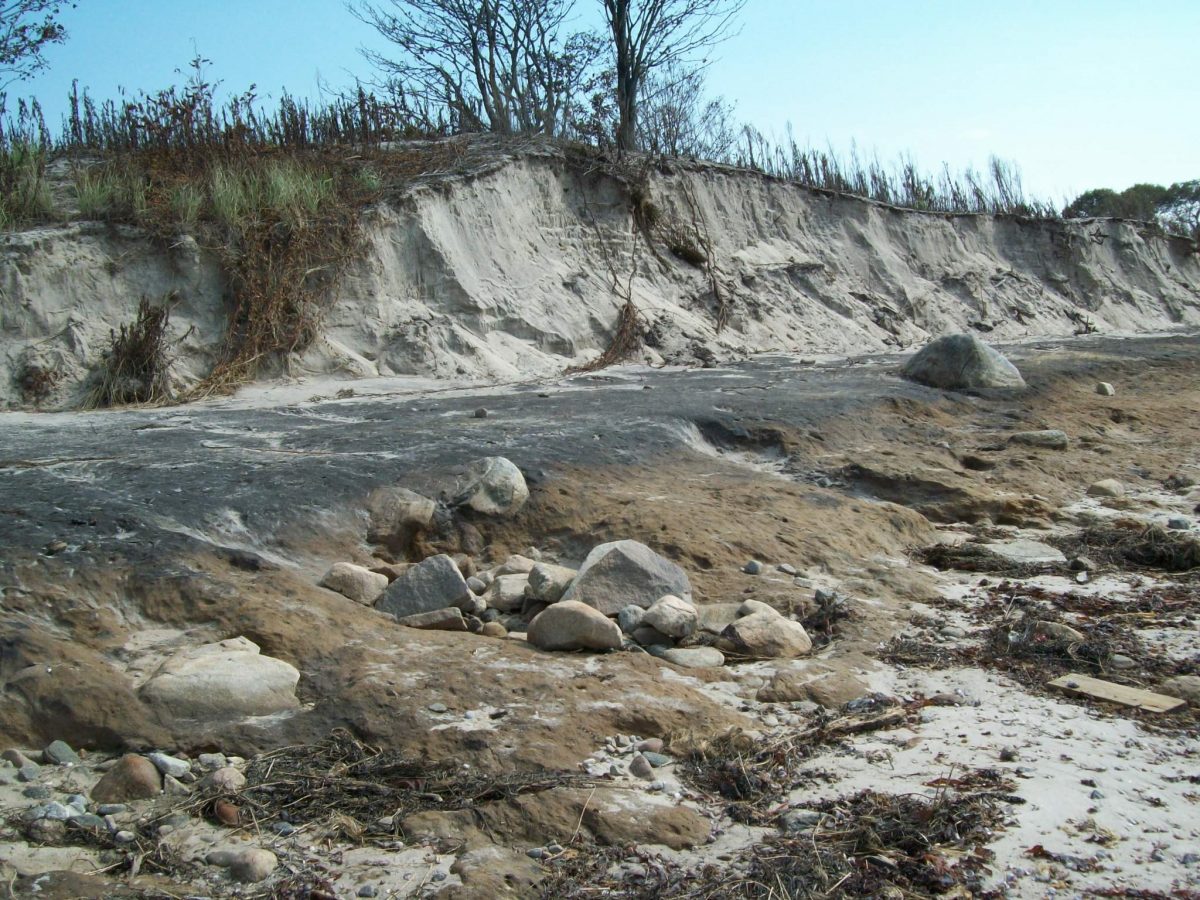
Storms and associated hazards such as flooding and erosion can damage coastal property and affect beaches and dunes that provide valuable habitat for uniquely adapted species of plants and animals. This website will help you evaluate threats and identify what you can do to protect your coastal property and the natural environment.
While beaches occupy only about 14 percent, or 87 miles, of Connecticut’s coastline, the shoreline is densely populated. Hazards of living near a beach or dune system include hurricanes and nor’easters, erosion, storm surge, and flooding. Learn more about Connecticut’s beaches and dunes and determine if your beach property is eroding.
Checklist to ID coastal hazards on your property
A checklist has been developed to help you identify and rank beach and dune hazards using the resources in this guide and by conducting a field inventory of your property.
Download Beach, Dune & Coastal Flooding checklist

Dune loss at Harkness Beach. Photo: Micheal P. Grzywinski, CT DEEP

| Beach Hazard Response Actions at a Glance | ||||
| Actions | Pros | Cons | Effort | Cost |
| Do nothing | Low cost, easy to implement | Unexpected results; uncertain future | Low | $ |
| Move landward | Reduces hazard to structures | Expense, site constraints; may not address erosion | Low-High | $$-$$$ |
| Elevate structure | Reduces hazard | Expense, site constraints; may not address erosion | Low-Med | $-$$ |
| Design appropriately | Reduces hazard | Expense, site constraints | Low-High | $$-$$$ |
| Construct a Living Shoreline | Reduces wave energy, increases natural processes and wildlife/fish habitat, protects uplands, improves water quality | Expense, site constraints, regular maintenance | Low-Med | $-$$ |
| Protect, enhance, construct dunes | Protects uplands, adds sand | Expense, site constraints, regular maintenance | Low-Med | $-$$ |
| Erect sand fencing | Fencing helps to trap sand | Temporary, easily knocked down by storms, restricts bird habitat | Low | $ |
| Nourish the beach | Reuses or adds sediment, creates habitat | Expense, site constraints | Med-High | $$$ |
| Repair a seawall | Repairs may be covered by general permit | Emergency, temporary, expensive; leads to false sense of security; can cause erosion, scouring, undermining of wall, potentially damaging to adjacent and alongshore property and habitats | Low-Med | $$-$$$ |
Contact Us
| Phone: | (860) 405-9106 |
|---|---|
| E-mail: | juliana.barrett@uconn.edu |
| Address: | 1080 Shennecossett Road Groton CT 06340 |

